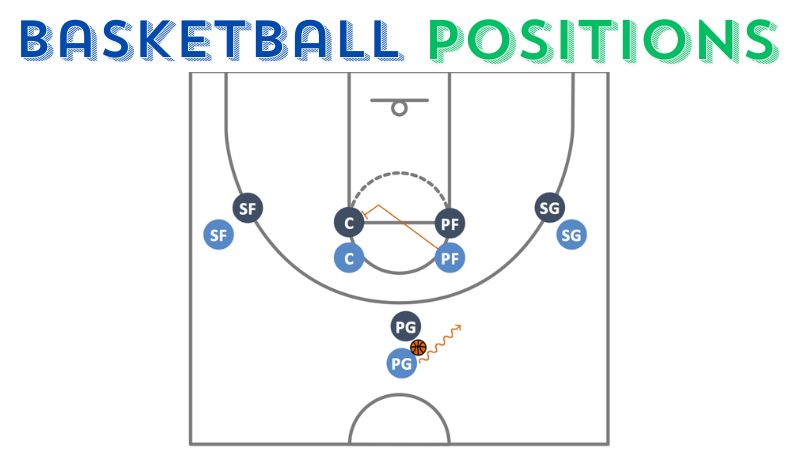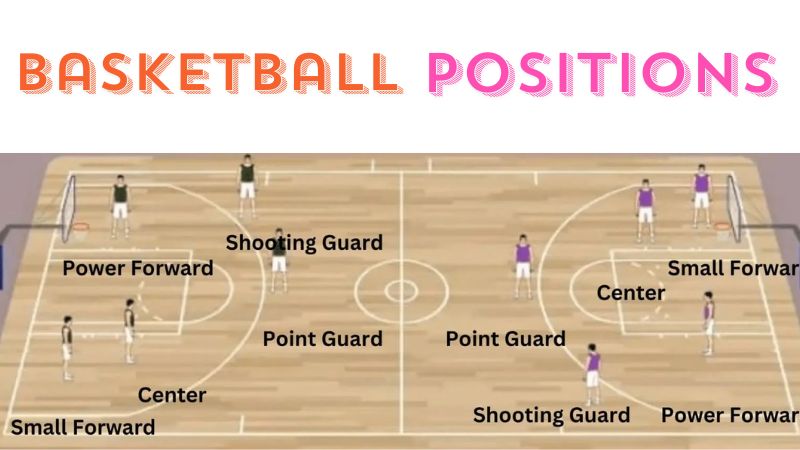Basketball, a globally admired athletic pursuit, flourishes through a symphony of collaboration, strategic acumen, and the nuanced skills of individual players. Grasping the intricacies of basketball positions stands as a cornerstone for both athletes and mentors, sculpting the intricate dynamics inherent in the sport. Within this discourse, we shall plunge into the metamorphosis of basketball positions, scrutinize the responsibilities tethered to each role, dialogue about contemporary tendencies, and underscore the imperative nature of positional understanding.
Evolution of Basketball Positions
The evolution of basketball positions has experienced a noteworthy metamorphosis through the passage of time. Initially, players were allocated distinct roles contingent on their stature and skill repertoire. However, the modern game embraces versatility, with players often transcending traditional positions.
The Five Main Basketball Positions
Point Guard: The Playmaker
Well known as the playmaker, the point guard is the team’s primary ball-handler and strategist. With remarkable passing and dribbling abilities, point guards have a good influence over the game’s pace. Also, the point guard set up plays to craft scoring opportunities. Pioneers in playmaking, exemplified by Magic Johnson and Chris Paul, embody the art of strategic orchestration on the basketball court.
Shooting Guard: The Scorer
The shooting guard accepts the crucial responsibility of being the team’s primary scorer. However, knowing for their skillful shooting, driving prowess, and offensive contributions. Shooting guards play an essential role in contributing points to the scoreboard. Iconic figures like Michael Jordan and Kobe Bryant. But, shooting guard epitomizes the scoring prowess integral to the shooting guard position.
Small Forward: The Versatile Wing
Small forwards function as the versatile Swiss Army knives of basketball, making contributions across diverse aspects of the game. But, are remembered for their versatility in scoring, defending, and playmaking. Small forwards bring a dynamic element to the team. Legendary small forwards such as LeBron James and Larry Bird have left a long-term impact on the sport. But, they carving out the greatest legacy.
Power Forward: Strength in the Paint
Power forwards excel in physicality, rebounding, and inside scoring. Positioned near the basket. So, they provide strength and tenacity in the paint. Legends like Tim Duncan and Karl Malone showcase the dominance of power forwards in the frontcourt.
Center: Dominance in the Paint
Centers stand as the beasts in the paint. So, they are undertaking the roles of rim protectors, rebounders, and scorers near the basket. With towering height and strategic positioning, centers influence both ends of the court. Wilt Chamberlain and Shaquille O’Neal analyze themselves as two of the most exceptional centers in the entire history of basketball.

Importance of Positional Awareness
Comprehending basketball positions extends beyond individual responsibilities; it involves forging a unified presence on the court. However, players and coaches need to recognize the strengths and duties associated with each position, aiming to enhance teamwork and strategic efficiency.
Versatility in Modern Basketball
Modern basketball witnesses players breaking traditional molds, showcasing versatility across positions. Athletes like LeBron James and Giannis Antetokounmpo soften the lines between positions. Also, they contribute as playmakers, scorers, and defenders.
Balancing the Team Composition
Constructing a victorious basketball team necessitates a well-balanced arrangement of positions. A strategic amalgamation guarantees the team’s adaptability to diverse game scenarios, optimizing strengths while minimizing weaknesses.
Training for Specific Positions
Tailoring specialized training to individual positions proves indispensable for player advancement. Point guards concentrate on refining ball-handling and court vision, whereas centers refine their post moves and shot-blocking capabilities. Targeted training augments a player’s efficacy in fulfilling their designated role.
Common Mistakes in Positional Play
Players often make mistakes in understanding and executing their roles. Overlapping responsibilities, improper spacing, and neglecting defensive duties are common pitfalls. Awareness and communication are key in avoiding these errors.
Versatility vs. Specialization
The debate between having versatile players or specialists continues. While versatile players offer adaptability, specialists bring unparalleled expertise in specific aspects of the game. However, teams must find the right balance based on their play style and objectives.
Conclusion
In conclusion, basketball positions form the foundation of team dynamics, shaping the way the game is played. So, the progression of positions, the adaptability of contemporary players, and the significance of strategic acumen collectively contribute to the dynamic essence of basketball. As the sport undergoes further evolution, comprehending and valuing the roles assigned to each position continue to be pivotal for success on the court.




Good job